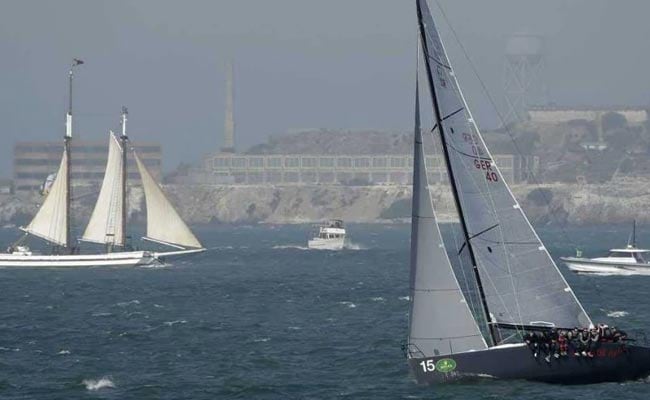From Italy’s point of view — a country that stopped the production of nuclear energy in its territory after the 1987 referendum — nuclear decommissioning is an old story struggling to come to an end. The truth, however, is that from a global point of view, this story has only just begun.
The world's nuclear fleet is aging. According to data from mid-2020, 440 reactors operate worldwide, spread across 30 countries, with the United States (95 reactors), France (57) and China (47) topping the list. About 270 are more than 30 years old. When you consider that, with the exception of the latest generation of power plants, nuclear plants originally were designed for a service life lasting around 30 years, you will understand the magnitude of the matter at hand.
Experts from IAEA, the International Atomic Energy Agency, provide us with some more precise data: "Over 190 power reactors in 20 countries are in a state of shutdown. Of those, 17 reactors have been fully decommissioned, while more are approaching the final stages of decommissioning. Up to 100 more power reactors may be shut down for decommissioning by the end of next decade."
In other words, regardless whether we want to continue along the path of nuclear power, it’s certain we must deal with the legacies of the first season of atomic energy. Legacies that, in reality, are made up of radioactive waste in only a small percentage (5 percent) and the non-dangerous large part instead could be recovered for other uses. Thus opening the door, even in the field of nuclear decommissioning, to circular economy.
According to data from mid-2020, 440 reactors operate worldwide, spread across 30 countries, with the U.S. (95 reactors), France (57) and China (47) topping the list.
Harbingers of circular economy in Italian nuclear decommissioning
"Component recycling and reuse practices are actually not new in the nuclear field. They have been applied since the 1990s, before people started talking about circular economy," said Flaviano Bruno, head of the Radioactive Waste division at Sogin, the public company responsible for dismantling decommissioned nuclear plants in Italy for more than 20 years.
After the 1987 referendum, Italy was among the first countries in the world to be confronted with nuclear decommissioning.
The four former power plants in Trino, Caorso, Latina and Garigliano, the fuel production plant in Bosco Marengo and the former research and reprocessing plants in Saluggia, Casaccia and Rotondella immediately were placed in safe store, or passive protective custody, following the internationally recognized practice of "deferred decommissioning." Only in 1999 did the so-called "accelerated decommissioning" begin when Sogin got involved. The term "accelerated" sounds a little ironic if one thinks about the long history of Italian nuclear decommissioning, with its bureaucratic obstacles, changes in leadership, NIMBY (Not In My Back Yard) syndrome and failure from politicians to accept responsibility.
The delays, however, should be compared to the very long time frames of radioactive waste management, where a disposal site for low radioactive waste (such as the National Repository discussed in recent weeks) should be designed for a duration of hundreds of years, while a geological repository must be suitable to keep the waste for millennia.
Radioactive waste aside, since the beginning of the process there nevertheless has been an effort to recover reusable materials according to practices that, already in 2001, a document drafted by IAEA began to identify and standardize. In the wake of the growing attention to the circular economy, in 2019 the Sogin itself, on the strength of its accumulated experience, organized a workshop on circular practices for decommissioning in collaboration with IAEA. It constituted an opportunity for meeting and discussion among experts from all over Europe and Japan, but also kind of the official entry of the circular economy into the world of nuclear power.
(Almost) nothing is thrown away from a nuclear power plant
What, in practice, can be recovered from the dismantling of a nuclear power plant?
The first thing to know "is that only 5 percent of the material decommissioned from a plant is radioactive. Of the remainder, about 90 percent can be recovered or recycled, while another 5 percent is disposed of as conventional waste," Bruno explained.
Much of the decommissioned material is concrete and metal, separated through a process of iron removal from concrete. Smaller amounts of other materials, especially plastics, are more difficult to handle. "The main reason is that there isn’t only one type of plastic and each has a different line of management. Not to mention that, since the plants are quite old, in some cases the used plastics no longer have a reference chain," Bruno said. "In addition to this, the minimum quantities present do not allow us to achieve economies of scale and the process therefore becomes inefficient. However, we are working on improving the recycling percentage further."
According to Sogin's estimates, the decommissioning of Italy's nuclear power plants and facilities will allow the recovery of over 1 million tons of material. Said recovery already has begun. Bruno explained: "In Caorso, where in 2014 the dismantling of the Off Gas building (Editor's note: This is where gaseous waste was treated before being released into the atmosphere) produced about 7,000 tons of concrete, which were then transformed into raw material used second and reused to fill in the excavations produced by the dismantling of the underground systems adjacent to the structure." Overall, from the decommissioning of the entire Caorso plant, the company expects to recover 300,000 tons of materials out of 320,000, consisting of 93 percent of the total.
Only 5% of the material decommissioned from a plant is radioactive. Of the remainder, about 90% can be recovered or recycled, while another 5% is disposed of as conventional waste.
Another recent example is the management of rock wool used for the insulation of the Latina plant. "A part of the rock wool was released, while the contaminated portion was treated with a super press to reduce its volume," Bruno said. "We started from 190 square meters of material: of these, 120 square meters were released for recycling and the remaining 70 were compacted, turning into just over around 10 square meters of material to be disposed of."
Reducing the volume of radioactive waste to a minimum is in fact a cardinal principle of nuclear decommissioning: given and considered the problems related to their safe disposal and the difficulty in finding a site to store them (in Europe, at the moment, only Finland and Sweden are building a permanent geological repository), it is essential that they occupy as little space as possible.
Radioactivity and safety
Coming back to the topic on recyclable materials, the first doubt that arises when talking about the circular economy applied to the nuclear field is, of course, safety. In reality, this is only a layman's doubt, because it is fairly obvious to insiders that the "released" material must be subjected to scrupulous checks to verify its levels of radioactivity. The procedure actually begins well before starting the dismantling process.
Bruno explained: "Preliminary analyses and chemical-physical and radiological characterizations are carried out in order to understand exactly how to manage all material flows. In fact, it’s necessary to adopt punctual segregation methods to separate radioactive waste from ‘conventional’ materials. As soon as we disassemble a component, if we know that it can be released for recycling, it will be managed separately to avoid cross-contamination. The segregation of material already takes place at the logistic level through separate storage areas, similarly to what is being done now with COVID waste in hospitals. The basic concept is the same: to separate the flows to be able to manage the material in a manner that will be consistent with what will be its end."
Release, reuse, recycle
Once the material has been safely released, for what and in what areas can it be reused and recycled? The destination depends on the standards and laws in place in each country. "In Italy, for example, unconditional release or free release is enforced," Bruno points out. "It means that what comes out of the radiological control system and is therefore releasable can be reused without conditions of use.” In fact, the decommissioning company's responsibility extends even beyond the moment of release. "For metals, according to the law, Sogin is responsible up to the moment of remelting in the smelter. The smelter, which is obliged to dilute by 10 times the metal we provide, must then send us back a certificate attesting to the correct procedure." Only then will the recycled metal actually be free to re-enter the production cycle.
Despite the existence of European and international standards on the management of these materials, the national law always overpowers them, so you can find substantial differences in management even among neighboring countries. For example, in France no release of material from the decommissioning of power plants is allowed. For a country that derives more than 70 percent of its electricity from nuclear power, the decision to lock up all the materials produced by decommissioning initially seemed strategic in order to keep public opinion at ease. "In reality, this is receiving the opposite reaction," said Bruno. "Most of the materials are not dangerous, while prohibiting their reuse fuels the idea that they are and therefore causes major concerns to the population."
In Germany, on the contrary, there are wider standards of reuse than in Italy. In fact, the unconditional release of "clean" materials is allowed, meanwhile a conditional release with various levels, and in specific industrial areas, for those slightly contaminated (which in Italy would not be released) is in place. "Generally, these are slightly contaminated metals that are still reused in the nuclear field," Bruno pointed out.
If nuclear decommissioning is a field full of difficulties in itself already, the road to making it more circular has its own peculiar obstacles.
It’s more difficult to make a comparison with extra-European countries, which do not refer to EU directives that tend to standardize many approaches. "For example, in the United States there is a difference in some management aspects, mainly due to the geographical configuration of the country: Many of their plants are in desert areas or, in any case, far from inhabited centers and therefore their approach can be more ‘relaxed’. For us Europeans, who have a highly anthropized situation, the management of materials is more delicate because it must always take into account the impact on the local territorial system."
Obstacles and best practices: the future of circular decommissioning
If nuclear decommissioning is a field full of difficulties in itself already, the road to making it more circular has its own peculiar obstacles.
When it comes to Italy, these are often gaps in the national waste management system, as Bruno explained: "Our problem is mainly about the distribution of the collection centers, which is not widespread. It is therefore often difficult to find a nearby collection center where we can bring the material we release and this involves economic costs that must be taken into account. A more widespread and structured system at national level would allow us to be more effective."
More broadly, standing in the way of a circular economy in the field is the same factor that will make this decade the era of nuclear decommissioning: the age of the plants. "Older facilities were designed and operated with little consideration of this issue, and their sustainable decommissioning poses specific challenges," explained the IAEA experts surveyed by Renewable Matter. "On the other hand, new nuclear facilities are now being planned from the start with decommissioning, waste management and circular economy in mind, which presents the opportunity for using innovative solutions. For example, reactor building components can be constructed in a modular fashion for easier dismantlement or construction materials can be used which are easier to decontaminate."
Surely exchanging best practices with other industry fields considered further along in the circular economy will also help with improvements. "The oil and gas industry, conventional demolition industry and others offer valuable experience in terms of technology availability, cost evaluation, risk assessment and other aspects of decommissioning," IAEA commented. "Remote handling and robotic technologies and digitalization used for complex project management are some of the newly available technologies which the nuclear industry and other sectors can use and apply. New digital techniques enable, for example, 3D physical and radiological surveys which support building information management for decommissioning purposes."
Of course, the internal comparison within the same field is also fundamental, so much so that, after the first international workshop organized with Sogin in 2019, IAEA will propose another one in 2021 in a webinar version.
In short, interest in a circular economy, even in the nuclear field, is high. Especially because, beyond the important recovery of resources, maximizing recycling means minimizing waste and thus reducing, at least in volume, the extent of the nuclear waste problem, while waiting for some of the futuristic projects underway to reuse used nuclear fuel rods to see the light of day. But that's another chapter in this story.
May 13, 2021














